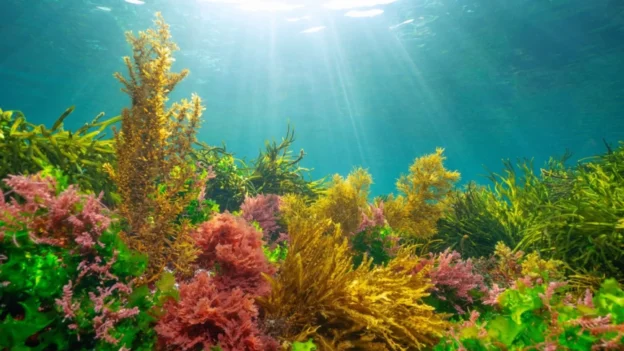Researchers at Concordia University have identified the potential in algae as a source and producer of renewable energy, capable of removing carbon while generating electricity. A renewable and sustainable solution for electricity production.
Production of renewable energy from algae
The team of the Optical Microsystems-Bio Laboratory has published an article in the journal Energies detailing how to extract energy from photosynthesis of algae suspended in solution and housed in small energy cells. These cells can power low-power devices,
Kirankumar Kuruvinashetti, PhD and Mitacs postdoctoral associate at the University of Calgary, explained that the process captures electrons produced during photosynthesis. This allows generate electricity and absorb carbon dioxide, resulting in a carbon-negative technology whose only by-product is water. resulting in a carbon-negative technology whose only by-product is water.
Photosynthetic energy microcells are composed of an anode and a cathode chamber, separated by a honeycomb proton exchange membrane. The algae are suspended in a solution in the anode chamber, while the cathode contains potassium ferricyanide, which acts as an electron acceptor. During photosynthesis, the algae release electrons that are collected by the membrane electrodes, generating a current.
Technology development
Researcher Dhilippan Panneerselvam mentioned that the process can continue without direct sunlight, although with less intensity. Algae breathe constantly, absorbing carbon dioxide and releasing oxygen and electrons during respiration, allowing for continuous electrical generation.
Department of Mechanical, Industrial and Aerospace Engineering professor Muthukumaran Packirisamy acknowledged that the technology cannot yet compete with photovoltaic cells in power generation comparisons.
However, with further research and development, including artificial intelligence-assisted technologies, this technology could be a viable and clean source of energy in the future. Packirisamy also noted that the system does not use hazardous gases or microfibers, such as the silicon technologies in photovoltaic cells, and uses biocompatible polymers, facilitating decomposition and reducing manufacturing costs.
Follow us on social networks and don’t miss any of our publications!
YouTube LinkedIn Facebook Instagram X
Source: Concordia University
Photo: Shutterstock

